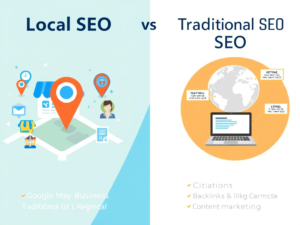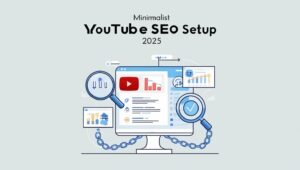Make Money as a Website Designer
Introduction
The demand for skilled website designers has never been higher. In 2024, businesses across every industry are recognizing the crucial role a well-designed website plays in attracting customers, building brand credibility, and driving sales. If you have a passion for design and a knack for technology, web design could be your ticket to a fulfilling and financially rewarding career.

In this comprehensive guide, we’ll delve into the myriad ways you can make money as a website designer in 2024. Whether you’re a seasoned professional or just starting out, we’ll cover everything you need to know to build a thriving business. We’ll explore how to hone your skills, create a captivating portfolio, land high-paying clients, price your services strategically, and even diversify your income streams.
Table of Contents
Building Your Foundation as a Website Designer
Creating a successful career in web design requires a blend of artistic vision, technical proficiency, and business acumen. Whether you choose to work as a freelancer or pursue a full-time position, the following areas are crucial to your success:
Essential Skills for Web Designers
To excel in web design, you need a combination of technical and soft skills:
- Technical Skills:
- Design Software Proficiency: Mastery of tools like Adobe XD, Figma, Sketch, or similar software is essential for creating wireframes, mockups, and final designs.
- HTML, CSS, and JavaScript: Understanding these core web technologies is crucial for bringing your designs to life and creating interactive elements. Familiarity with front-end frameworks like React or Angular can be a significant advantage.
- Responsive Design: The ability to create websites that adapt seamlessly to different screen sizes and devices is a must in today’s mobile-centric world.
- SEO Basics: Having a foundational knowledge of search engine optimization (SEO) principles helps you design websites that rank well in search results.
- Soft Skills:
- Communication: Clearly articulating your design ideas, collaborating with clients and team members, and gathering feedback effectively are crucial for successful projects.
- Project Management: Planning, organizing, and delivering projects on time and within budget are essential for client satisfaction and your own success.
- Problem-Solving: Web design often involves troubleshooting technical issues and finding creative solutions to design challenges.
- Creativity: A keen eye for aesthetics, visual storytelling, and the ability to translate ideas into engaging designs are at the heart of web design.
Portfolio Development: Your Digital Showcase
Your portfolio is your most powerful marketing tool. It’s a curated collection of your best work that demonstrates your skills, style, and experience. When building your portfolio:
- Quality Over Quantity: Select only your most impressive projects that showcase your versatility and expertise.
- Diversity: Include a variety of projects that demonstrate your ability to design for different industries or purposes (e.g., e-commerce, blogs, portfolios).
- Case Studies: For each project, provide a brief description of the client’s goals, your design process, the challenges you faced, and the solutions you implemented.
- Live Links: Whenever possible, include live links to your projects so potential clients can experience your work firsthand.
- Presentation: Choose a clean, professional website template or portfolio platform to showcase your work in an organized and visually appealing way.

Setting Up Your Web Design Business
If you’re venturing into freelancing or starting your own agency, consider these business aspects:
- Business Registration: Decide on your business structure (sole proprietorship, partnership, LLC) and register your business with the appropriate authorities.
- Website: Create a professional website that showcases your portfolio, services, and contact information.
- Pricing: Choose a pricing model that suits your experience and target market (hourly rate, project-based fees, retainers). Research industry standards to ensure your rates are competitive.
- Contracts: Develop clear, comprehensive contracts that outline project scope, deliverables, timelines, payment terms, and ownership of intellectual property.
- Marketing and Networking: Promote your services through online platforms, social media, and networking events. Build relationships with potential clients and other professionals in the industry.
Freelancing and Job Opportunities
Web designers have a wealth of options:
- Freelancing: Enjoy flexibility and autonomy while working on diverse projects. Platforms like Upwork and Fiverr can help you find clients.
- Web Design Agencies: Join a team of designers and work on larger, more complex projects.
- In-House Designer: Work for a single company, focusing on their specific web design needs.
- Startups: Contribute to the early stages of a new company’s online presence.
Pricing and Financial Aspects
As a freelancer, setting your rates requires careful consideration:
- Experience: Your level of experience and expertise will influence your rates.
- Project Scope: The complexity and scale of the project will affect your pricing.
- Market Rates: Research industry standards to ensure you’re charging competitive rates.
- Value-Based Pricing: Consider the value you bring to the client beyond just design (e.g., user experience, branding).
Portfolio and Showcase
Your portfolio is your ongoing showcase:
- Keep it Updated: Regularly add new projects to your portfolio to reflect your latest skills and experience.
- Client Testimonials: Request testimonials from satisfied clients to add credibility to your work.
- Blogging or Social Media: Share your knowledge and insights through blog posts or social media to establish yourself as a thought leader in the industry.
Finding and Landing Clients – Your Path to Freelancing Success
The lifeblood of any freelance career is a steady stream of clients. But how do you attract the right clients, those who value your work, pay fairly, and offer projects that align with your skills and interests? This section is your roadmap.
Identifying Your Ideal Clients: The Foundation of Targeted Marketing
Imagine trying to sell swimwear in the Arctic – it’s a mismatch. The same principle applies to freelancing. To make your marketing efforts effective, you need to narrow your focus.
- Define Your Niche: What specific skills or services do you offer? Are you a graphic designer specializing in logos, a web developer with expertise in e-commerce, or a writer who crafts compelling blog posts? The more specific you can be, the better.
- Know Your Target Audience: Who needs your services? Are you targeting small businesses, startups, established corporations, or individuals? Understanding your ideal client’s demographics, pain points, and goals will help you tailor your message and reach them effectively.
Marketing Your Services: Building Your Freelancing Brand
Think of marketing as showcasing your value to potential clients. It’s about building a strong online presence and reputation that attracts opportunities.
- Portfolio Showcase: Your portfolio is your visual resume. It’s a curated collection of your best work that demonstrates your skills and expertise. Make sure it’s easy to navigate, visually appealing, and highlights your most relevant projects.
- Social Media Marketing: Platforms like LinkedIn, Twitter, and even Instagram can be powerful tools for connecting with potential clients. Share your expertise, engage in relevant conversations, and showcase your personality.
- Content Marketing: Start a blog,create videos, or host webinars. Share valuable insights related to your niche. This establishes you as an expert and attracts clients who resonate with your knowledge.
- Networking: Attend industry events, both online and offline. Connect with other freelancers, potential clients, and industry professionals. Building relationships can open doors to opportunities you might not find online.
- Cold Outreach: Don’t be afraid to reach out directly to potential clients. Tailor your message to their specific needs, highlighting how your skills can solve their problems.
Crafting Effective Proposals: Your Ticket to Winning Projects
A proposal is your chance to shine. It’s more than just stating your price; it’s about demonstrating the value you bring.
- Client-Centric Focus: Clearly articulate how your services will benefit the client. Use their language, address their pain points, and demonstrate your understanding of their goals.
- Showcasing Your Portfolio: Include relevant work samples that align with the project’s requirements. This helps the client visualize the quality of your work.
- Pricing Transparency: Be upfront about your rates. Whether you charge hourly, per project, or offer package deals, make it easy for the client to understand your pricing structure.
- Financial Aspects: Consider offering flexible payment options, such as milestones or installment plans, to make it easier for clients to budget.
- Job Opportunities Alignment: Ensure the projects you propose align with your long-term career goals. Taking on work that excites you will lead to better results and a more fulfilling freelance journey.

Pricing Your Web Design Services: A Freelancer’s Guide
Pricing is a crucial aspect of freelancing, and as a web designer, understanding the different pricing models, calculating your worth, and mastering negotiation are key to securing fair compensation and building a successful career.
1. Understanding Pricing Models
There are several pricing models you can use for your web design services, each with its own pros and cons:
- Hourly Rate: You charge a set rate for each hour of work. This is suitable for smaller projects or projects where the scope isn’t fully defined.
- Pros: Flexibility, easy to calculate for simple tasks.
- Cons: Clients may worry about costs escalating, doesn’t always reflect the value of the work.
- Project-Based Pricing (Fixed Fee): You set a total price for the entire project. This is ideal when you have a clear scope and timeline.
- Pros: Provides certainty for both you and the client, allows you to focus on delivering results.
- Cons: Requires accurate project estimation, less flexibility for scope changes.
- Retainer Model: Clients pay a recurring fee for a set number of hours or services per month. This works well for ongoing relationships or maintenance work.
- Pros: Provides predictable income, encourages long-term client relationships.
- Cons: May require setting boundaries to avoid scope creep, not suitable for one-off projects.
Choosing a Model: The best pricing model for you will depend on your preferences, project types, and client needs. Many web designers use a combination of models (e.g., project-based for new website builds, hourly rate for smaller tasks, and retainers for ongoing support).
2. Calculating Your Worth
Setting your rates is a balancing act. You need to consider both your financial needs and the value you bring to clients:
- Experience and Skill Level: More experienced designers typically command higher rates. As your portfolio and skillset grow, so should your rates.
- Market Rates: Research what other web designers in your area or niche are charging. You can use online resources, job boards, and freelance platforms to gauge the market.
- Project Complexity: A simple landing page will cost less than a complex e-commerce website. Factor in the time, effort, and expertise each project demands.
- Value Proposition: Don’t just sell your time; sell the value you deliver. If you can help clients increase sales or improve their online presence, you can justify charging higher rates.
Financial Considerations: Calculate your expenses (e.g., software, hosting, marketing) and desired income to determine your minimum hourly rate or project fee.
3. Negotiation Tips
Negotiation is a crucial skill for freelancers. Here’s how to approach it:
- Be Confident: Know your worth and the value you offer. Don’t undervalue your services.
- Focus on Value: Frame your discussions around the results you can deliver for the client, not just the hours you’ll work.
- Be Flexible: While it’s important to stand firm on your base rates, be open to negotiating payment terms or offering package deals.
- Get Everything in Writing: Once you’ve reached an agreement, create a detailed contract that outlines the scope of work, payment terms, timelines, and any other relevant details.
Freelancing and Job Opportunities:
Building a strong portfolio and showcasing your best work are essential for attracting clients and landing high-paying projects. Utilize platforms like Behance and Dribbble to display your designs, and actively network with potential clients online and offline.
Expanding Your Income Streams as a Web Designer
Web design is a versatile skill that opens doors to various income opportunities beyond client projects. Here’s a breakdown of some strategies you can use:
1. Freelancing and Job Opportunities
- Freelance Platforms:
- Upwork: A global platform connecting freelancers with clients across diverse industries. Create a compelling profile showcasing your web design skills and experience. Bid on projects that align with your expertise and interests.
- Fiverr: A marketplace where you offer “gigs” (specific services) at set prices. Create gigs for website design, landing page creation, or other web-related tasks. Optimize your gig descriptions with relevant keywords to attract potential clients.
- Specialized Platforms: Look for platforms catering specifically to web design or creative professionals. These can be niche communities where you’ll find clients seeking your particular skills.
- Networking: Attend industry events, webinars, and conferences to connect with potential clients and collaborators. Building relationships can lead to referrals and job opportunities.
2. Selling Digital Products: Passive Income for Web Designers
- Website Templates and Themes: Create visually appealing, user-friendly templates or themes for popular platforms like WordPress, Shopify, or Squarespace. Sell them on marketplaces like ThemeForest or Creative Market, or offer them directly on your website.
- Plugins and Extensions: Develop plugins that add functionality or enhance user experience on websites. This could include contact forms, e-commerce integrations, or social media tools. Consider selling them on platforms like CodeCanyon or your website.
- Stock Photos and Graphics: If you have a knack for design, create and sell high-quality photos, illustrations, or icons that web designers can use in their projects.
3. Offering Web Design Courses: Sharing Your Expertise
- Online Courses and Workshops: Package your knowledge into structured courses or workshops. Platforms like Udemy, Skillshare, or Teachable make it easy to create and host your educational content.
- Webinars and Live Sessions: Host live sessions to teach specific web design techniques, answer questions, or offer consultations. This can be a great way to engage with your audience and build a following.
- One-on-One Coaching: Offer personalized coaching to aspiring web designers. Help them develop their skills, create portfolios, or land their first clients.
4. Pricing and Financial Aspects
- Project-Based Pricing: Determine your fees based on the project scope, complexity, and estimated time.
- Hourly Rate: Charge an hourly rate for ongoing maintenance, support, or smaller tasks.
- Retainer Agreements: Offer clients a set number of hours each month for a fixed fee. This can provide you with a predictable income stream.
5. Portfolio and Showcase
- Professional Website: Showcase your best work on a well-designed website. Include case studies, testimonials, and clear contact information.
- Online Portfolio Platforms: Utilize platforms like Behance or Dribbble to share your designs and attract potential clients.
- Social Media: Leverage platforms like Instagram or Pinterest to share visually appealing designs and connect with your target audience.
Building a Thriving Web Design Business
Web design is a dynamic field with immense potential for freelancers and agencies alike. To carve your niche and achieve sustainable success, consider these key strategies:
1. Freelancing and Job Opportunities
- Find Your Niche: Specialize in a particular style (e.g., minimalist, e-commerce, portfolio sites) or industry (e.g., healthcare, technology, education). This helps you target a specific audience and stand out.
- Platforms: Utilize freelancing platforms (Upwork, Fiverr) and job boards to find initial projects. Networking and referrals will become increasingly important as you grow.
- Proposals: Craft compelling proposals that showcase your understanding of the client’s needs, your unique approach, and clear deliverables.
2. Client Management: The Foundation of Success
- Clear Communication: Set expectations from the start. Discuss timelines, budget, revisions, and communication channels. Regular updates prevent misunderstandings.
- Contracts: Always use detailed contracts that outline project scope, payment terms, ownership of work, and any potential contingencies. This protects both you and your client.
- Feedback Loop: Encourage open communication and feedback throughout the project. This ensures you’re on the right track and can address concerns early.
- Deliver on Time: Meeting deadlines builds trust and professionalism. Use project management tools (Asana, Trello) to stay organized and track progress.
3. Pricing and Financial Aspects
- Value-Based Pricing: Don’t just charge by the hour. Price projects based on the value you provide. Consider the complexity of the site, the industry, and your level of expertise.
- Payment Structure: Establish a clear payment schedule (e.g., upfront deposit, milestones, final payment). This ensures you’re compensated for your work and minimizes financial risk.
- Financial Management: Keep track of your income and expenses. Use accounting software (QuickBooks, Xero) to simplify invoicing, tax preparation, and overall financial management.
4. Portfolio and Showcase: Your Digital Storefront
- Quality over Quantity: Include only your best work in your portfolio. Showcase diverse projects that demonstrate your skills and expertise.
- Case Studies: Go beyond just visuals. Explain the client’s problem, your solution, and the positive impact of your work.
- Testimonials: Client testimonials add credibility and social proof. Ask satisfied clients to write brief reviews highlighting your professionalism and the results you delivered.
5. Scaling Your Business: From Solo to Agency
- Hiring: When your workload exceeds your capacity, consider hiring other web designers or developers. Look for individuals who complement your skills and share your values.
- Partnering: Collaborate with other freelancers (e.g., copywriters, SEO specialists) to offer a wider range of services. This expands your reach and attracts larger clients.
- Additional Services: Expand your offerings beyond just web design. Consider providing website maintenance, SEO optimization, or content creation services.
6. Staying Ahead of the Curve: Continuous Learning
- Stay Updated: Web design trends evolve rapidly. Regularly read industry blogs, follow influential designers, and attend conferences or webinars to stay informed.
- Experiment: Don’t be afraid to experiment with new technologies and design techniques. This keeps your skills sharp and your portfolio fresh.
- Professional Development: Invest in courses and certifications to deepen your expertise in specific areas like UX design, responsive design, or JavaScript frameworks.
Key Takeaways:
- Build Relationships: Prioritize client satisfaction and communication.
- Be Organized: Effective project management is crucial for success.
- Know Your Worth: Price your services based on the value you deliver.
- Never Stop Learning: Embrace change and invest in your professional growth.
Conclusion
In this comprehensive guide, we’ve explored the multifaceted landscape of freelancing, from identifying lucrative freelancing and job opportunities to mastering the art of pricing and financial aspects that ensure your success. We’ve delved into the power of a compelling portfolio and showcase to attract your ideal clients and establish your brand.
Key Takeaways:
- The Freelance Advantage: Freelancing offers unparalleled flexibility and control over your career path, allowing you to pursue your passions and work on your terms.
- Financial Savvy: Understanding your value and setting competitive rates is crucial for sustainable freelance success. Remember, you’re not just selling your time; you’re offering expertise and solutions.
- Showcase Your Brilliance: A well-curated portfolio is your virtual storefront. Highlight your best work, demonstrate your range, and make it easy for potential clients to envision you as the perfect fit for their projects.
- Networking and Community: Building a strong network is your lifeline in the freelance world. Connect with other freelancers, potential clients, and mentors who can offer support, advice, and opportunities.
Your Freelance Journey Begins Now
Don’t wait for the “perfect” time to embark on your freelance adventure. Take the first step today! Start refining your skills, building your portfolio, and connecting with potential clients. Remember, every successful freelancer was once a beginner.
Share Your Story
We’d love to hear about your freelance journey. What strategies have you found most effective? What challenges have you overcome? Share your experiences, insights, and questions in the comments below. Let’s build a supportive community of freelancers, where we learn and grow together.
Remember: Your freelance career is a marathon, not a sprint. Stay focused, persistent, and passionate, and you’ll create a fulfilling and profitable freelance business.
FAQs
What are the best freelancing platforms to find work?
Top platforms include Upwork, Fiverr, Freelancer, Guru, and Toptal. Each has its own strengths and specialties, so explore them to see which fits your skills and preferences.
How do I set my freelance rates?
Consider your experience, the complexity of the project, the industry standard, and your desired income. You can charge hourly or per project. Research similar freelancers to get an idea of competitive pricing.
How do I create a strong portfolio as a freelancer?
Start by showcasing your best work. If you’re just starting, consider personal projects or offering discounted services to build experience and gather samples. Highlight different skills and project types to demonstrate versatility.
What are the essential skills for a successful freelancer?
Beyond your core expertise, strong communication, time management, self-discipline, marketing, and negotiation skills are crucial.
How do I find remote job opportunities?
Job boards like Indeed, LinkedIn, and FlexJobs list remote positions. Networking on platforms like LinkedIn and attending virtual job fairs can also be effective.
What are the tax implications of freelancing in [Your Country or Region]?
It’s crucial to understand your local tax laws. You’ll likely be responsible for self-employment taxes and income tax. Consult a tax professional for guidance.
How should I invoice clients?
Use professional invoicing software or templates. Clearly outline services, rates, payment terms, and deadlines.
How do I protect myself from non-payment?
Consider using escrow services, especially for larger projects. Get a portion of the payment upfront, and establish clear milestones with corresponding payments.
What financial tools are helpful for freelancers?
Accounting software (like QuickBooks or FreshBooks), time-tracking tools, and project management software can streamline your finances and workflow.
Where should I showcase my portfolio online?
You can create a personal website or portfolio on platforms like Behance, Dribbble (for creatives), GitHub (for developers), or Contently.
How often should I update my portfolio?
Aim to update it with new projects every few months. This shows potential clients that you’re active and continuously improving.





